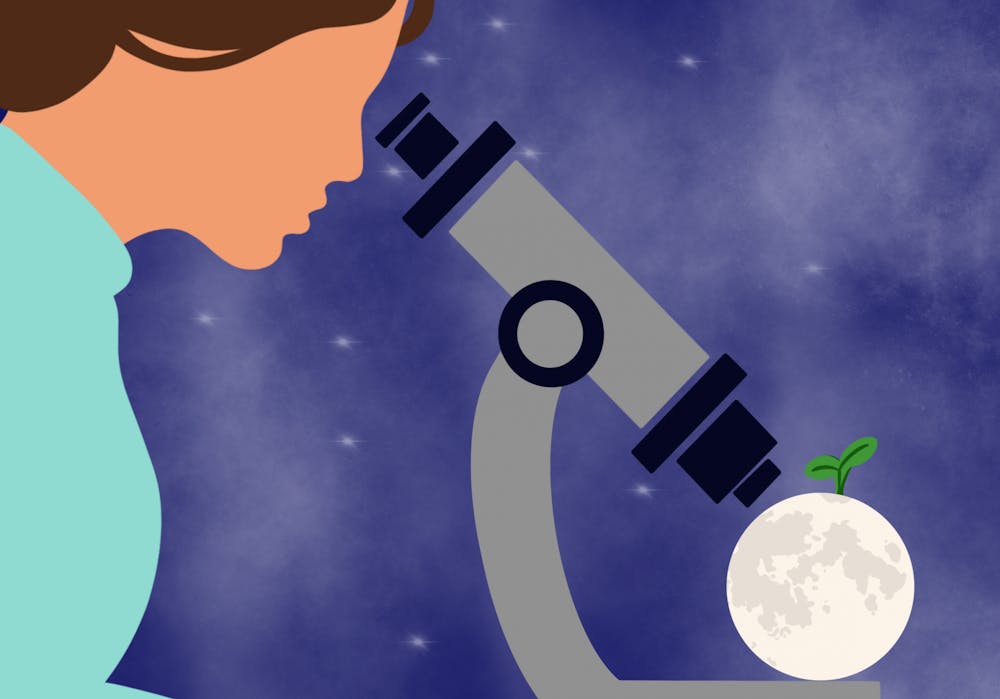NASA has selected the School of Engineering and Applied Science to work on technology that can hopefully be applied for future missions to the moon as it prepares to launch Artemis and return astronauts to the moon.
With the last manned mission to the moon being 50 years ago, NASA and the University will be working to extend the sphere of what can be explored on the moon’s surface.
Electrical and Computer Engineering Prof. Mool Gupta will lead the development of the technology to be created. His current project, a mini-rover, will not only be able to detect characteristics of the surface but also the subsurface.
To enable the exploration of the moon, NASA needs an instrument which can detect the composition of rocks and retrieve any signature of the life trace on the moon. This novel instrument also must be lightweight as it will be sent millions of miles away. Gupta and his team proposed a lightweight, compact and low-power conjunction whose small, tube-like head weighs less than an ounce.
“We proposed to NASA to develop a compact device that is multifunctional, which means it can detect the composition, chemical element, information, biological signatures, morphology of the surface and thermal properties,” Gupta said.
In August, NASA awarded a $900,000 grant over two years to the School of Engineering and Applied Science for development of the project. Gupta said NASA’s mission involves exploring different planets, looking for minerals in rock formations to see how they form and probing the possibility of life on the moon.
The instrument will be able to detect both inorganic and organic compounds. Gupta and his lab’s experience with photonics, the science behind light, will be essential for collecting data on the elemental signatures, or chemical compositions, of the rocks.
Postdoctoral Research Fellow Pawan Kanaujia has been working with the lab for about a year and specializes in lasers and detection technology.
“Light will be scattered in different directions and we will detect the scattering, which depends on the substrate and where it is spiking,” Kanaujia said.
Unlike Earth, however, the moon has no atmosphere and there is no scattering of light on the surface. Kanaujia explained how this means that there is increased precision of the laser beams and, therefore, the laser’s ability to retrieve elemental compositions of materials.
Gupta said using lasers provides the fluorescence and energy to power certain reactions. Materials exposed to laser beams are vaporized and then emit light, which allows researchers to know what is present in that material.
The mini-rover’s ability to detect elements from the moon’s surface will be of particular interest in less discovered areas on the moon, such as the South Pole. Since the South Pole region could be abundant in resources, NASA is also interested in the mini-rover’s ability to probe the ice and analyze its composition.
Under Gupta’s guidance, students at the University participated in the NASA BIG Idea Challenge Competition last year. They demonstrated that energy from solar panels placed on the moon could be converted to electrical energy followed by laser energy in order to power machines over long distances on the South Poles. Gupta explained how the students focused on the fact that the top of the craters in these shadowy regions actually receive sunlight compared to some mile deep craters that do not.
The technology could potentially be used on other planets but with certain considerations and modifications in place. On planets with differing atmospheric conditions, Gupta explained that the technology needs additional heating. The future benefits of such research could reap wonders.
“There is interest in exploring the south pole and the moon because not only is it challenging for human society, but it could be a payoff in the long term,” Gupta said.
With limited natural resources available on Earth, scientists believe that the moon could be a goldmine for future generations. For example, with the moon being rich in helium-3, scientists could harvest this energy from the moon to use as a fuel in future nuclear fusion power plants.
Due to the use of these advanced processes and technology, Gupta and Kanaujia described this research project as a multidisciplinary collaborative effort. Researchers, for instance, with an astrophysics, geology, optics, photonics or laser background all participate in this project.
These exploration efforts could potentially determine if there ever was life on the moon, perhaps leading us to sending humans to the moon again for new discoveries.







